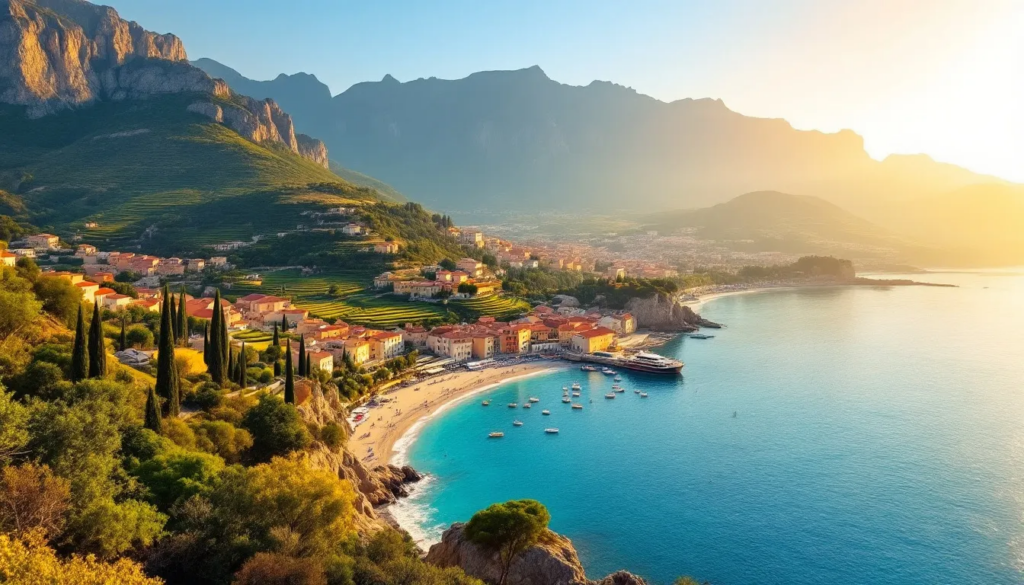Best Travel Itinerary for Italy: Tips for Stress-Free Adventures
Italy is one of the world’s most captivating travel destinations, offering a rich tapestry of history, art, culture, and cuisine. Whether wandering through the romantic canals of Venice, exploring Renaissance masterpieces in Florence, or tasting fresh seafood along the Amalfi Coast, travelers are constantly faced with one key decision: what is the best travel itinerary for Italy?
Choosing the right mode of transportation is crucial for maximizing your experience. Italy’s landscape varies dramatically from bustling cities to rolling countryside and coastal towns, making travel planning essential for efficiency, comfort, and enjoyment. From high-speed trains to regional buses, ferries, and rental cars, each transport option offers unique advantages and challenges. Understanding these choices helps you navigate Italy with ease, avoid common pitfalls like train strikes or congested city streets, and create a stress-free, unforgettable itinerary.
In this guide, we explore the best ways to travel in Italy, combining expert tips, practical advice, and real-world examples to help you plan a journey that fits your style, schedule, and budget.
Why Choosing the Right Transport Matters in Italy
The best way to travel in Italy depends on your route, budget, and personal preferences. Italy is well-connected by trains, buses, ferries, and road networks, but each option serves different travel styles. Selecting the right transportation method can save time, reduce stress, and allow you to experience more of Italy’s beauty efficiently.
Italy is famous for its iconic train system, but driving offers access to remote towns and scenic countryside routes. Public transport provides affordable options for urban exploration, while ferries and water taxis open access to coastal gems. A thoughtful combination of these modes ensures your travel is not only convenient but also memorable. Planning allows you to take advantage of early booking discounts, travel passes, and apps that help navigate regional differences, such as Trenitalia vs Italo trains, metro variations in Rome, or ferry schedules along the Amalfi Coast.
Traveling by Train in Italy
Train travel is often considered the most efficient way to explore Italy. High-speed trains, such as Frecciarossa and Italo, connect major cities like Rome, Florence, Milan, and Naples in just a few hours, while regional trains serve smaller towns and countryside destinations.
Booking your train tickets early through platforms like Omio or Trainline Italy can save money and ensure reserved seating. Remember to validate train tickets in Italy at station machines for regional routes to avoid fines. Consider luggage limits and travel times when planning your journey, especially for multi-day trips or when hopping between cities.
Pros of train travel in Italy:
- Fast travel between major cities
- Comfortable, air-conditioned seating
- Scenic routes through Tuscany and other countryside areas
- Sustainable and eco-friendly travel option
Cons:
- Limited flexibility for remote towns without train stations
- Potential delays or strikes (travel insurance recommended)
- Reservations are often required for high-speed trains
For travelers on a one-week Italy trip, trains are particularly ideal, allowing city hopping without worrying about parking, ZTL zones, or narrow streets in historic centers.
Exploring Italy by Car
Driving in Italy is ideal for travelers seeking freedom and access to off-the-beaten-path locations. Car rental is recommended for regions like Tuscany, Le Marche, and the Amalfi Coast, where smaller towns and scenic countryside roads are best explored independently.
Before hitting the road, understand Italian traffic rules, such as ZTL zones in historic city centers, and ensure your rental includes proper insurance coverage. Planning parking in major cities and checking public holidays or road closures is essential for a smooth experience.
Pros of driving in Italy:
- Complete flexibility to explore at your own pace
- Access to rural towns and scenic routes
- Ideal for family travel or small group trips
Cons:
- Navigating narrow roads, especially in southern regions
- Traffic congestion in cities like Rome, Naples, and Milan
- Higher costs for fuel, tolls, and parking
For a multi-day Italy travel plan, combining a car for countryside exploration with train travel for city hopping offers the best balance between flexibility and efficiency.
Other Transport Options
While trains and cars dominate, alternative transport options provide additional flexibility. Bus travel in Italy is a cost-effective choice for regional trips, though it’s generally slower than trains. Metro and tram systems in cities like Rome, Milan, and Naples make urban travel convenient and budget-friendly.
For coastal travel, ferries and water taxis in Venice and along the Amalfi Coast allow scenic exploration and easy access to islands. Domestic flights can be practical for long distances, such as Rome to Sicily or Sardinia, saving hours compared to trains.
Tips for alternative travel options
- Research schedules and book in advance to secure seats
- Validate tickets when required to avoid fines
- Use travel apps to plan connections efficiently
How to Combine Transport Methods for the Best Itinerary
The best way to travel in Italy often involves a multi-modal approach. Combining trains, cars, and guided day tours allows travelers to maximize both convenience and experience.
Example itinerary:
- Rome → Florence → Venice: High-speed train between cities, walking in city centers
- Tuscany countryside: Rent a car for scenic drives, visiting vineyards and small towns
- Coastal day trips: Ferries or water taxis along Amalfi Coast for scenic exploration
| Mode | Best For | Pros | Cons |
|---|---|---|---|
| Train | City-to-city | Fast, comfortable, scenic | Limited flexibility in rural areas |
| Car | Countryside, small towns | Freedom, access to hidden gems | Traffic, parking challenges |
| Bus | Budget travel | Affordable | Slower, less frequent |
| Ferry/Water Taxi | Coastal/island trips | Scenic, direct | Weather-dependent |
This approach ensures travelers experience both iconic landmarks and hidden gems while minimizing travel stress.
Budget vs Luxury Travel Options
Italy accommodates every travel style and budget. Budget travelers can rely on regional trains, buses, hostels, and day tours. Luxury travelers can opt for first-class train tickets, private car rentals, guided tours, and concierge-level experiences.
Budget Tips
- Book Italy train tickets early for discounts
- Use Rome transport pass or multi-day city passes
- Travel by bus or regional trains for short distances
Luxury Tips
- First-class seating on high-speed trains
- Private chauffeur or guided tours for scenic regions
- Stay in boutique hotels or countryside villas
Balancing comfort and cost ensures that every traveler can enjoy stress-free Italy travel, whether planning a 10-day Italy itinerary or a quick one-week Italy trip.
Tips for Stress-Free Italy Travel
Italy travel can be overwhelming without proper planning. Here are expert strategies to make your journey smoother:
- Plan transport routes in advance: Decide when to take trains, rent cars, or book ferries.
- Use travel apps: Omio, Trainline Italy, and local transport apps help manage tickets and connections.
- Pack smart: Keep luggage manageable for train and bus travel.
- Travel off-peak: Early mornings and weekdays avoid crowds in tourist hotspots.
- Check for strikes: Train strikes occasionally disrupt travel; travel insurance is recommended.
Applying these tips ensures that your Italian adventure remains enjoyable and stress-free, leaving more time to savor culture, cuisine, and scenery.
Recommended Side Excursions
Italy’s regions offer countless opportunities for side excursions that complement main city itineraries. Discover hidden gems such as charming hill towns in Tuscany, scenic vineyards in Le Marche, or coastal villages along the Amalfi Coast. Side trips provide unique experiences that train or car travel alone may miss, creating richer, memorable journeys.
Planning side excursions ensures you see both famous landmarks and local secrets, making your trip to Italy not only convenient but also immersive and authentic.
Conclusion
Traveling in Italy offers a diverse range of options, from high-speed trains and regional routes to buses, ferries, and car travel, each suited to different preferences and itineraries. Navigating between cities, exploring scenic countryside routes, and understanding local transportation nuances can greatly enhance the overall experience. By considering factors such as convenience, cost, accessibility, and regional differences, travelers can make informed choices that align with their pace and style, ensuring a smooth and enjoyable journey through Italy’s rich culture, history, and landscapes.
Discover a more authentic and stress-free way to explore Italy with True Colors of Italy. Our private, all-inclusive day tours showcase the culture, nature, and cuisine of the Le Marche region, crafted for solo travelers or small groups seeking depth, comfort, and local insight. Contact us today to plan your personalized Italian journey.
FAQs
What is the best way to travel around Italy?
The best way depends on your itinerary. High-speed trains are ideal for city-to-city travel, while rental cars are best for countryside exploration. Combining both often provides the most efficient and enjoyable experience.
What is the cheapest way to travel within Italy?
Regional trains and buses are the most affordable options. Booking tickets early and using city transport passes can save additional money, especially for short distances or multi-day trips.
Which part of Italy is best to visit for the first time?
Rome, Florence, and Venice are ideal for first-time visitors due to their iconic landmarks, accessibility via high-speed trains, and variety of guided and self-explored experiences.
How can I plan transport for family or senior travel in Italy?
Choose convenient and accessible options like high-speed trains, airport transfers, and guided tours. Avoid renting cars in congested cities and consider multi-day passes for urban transport.












